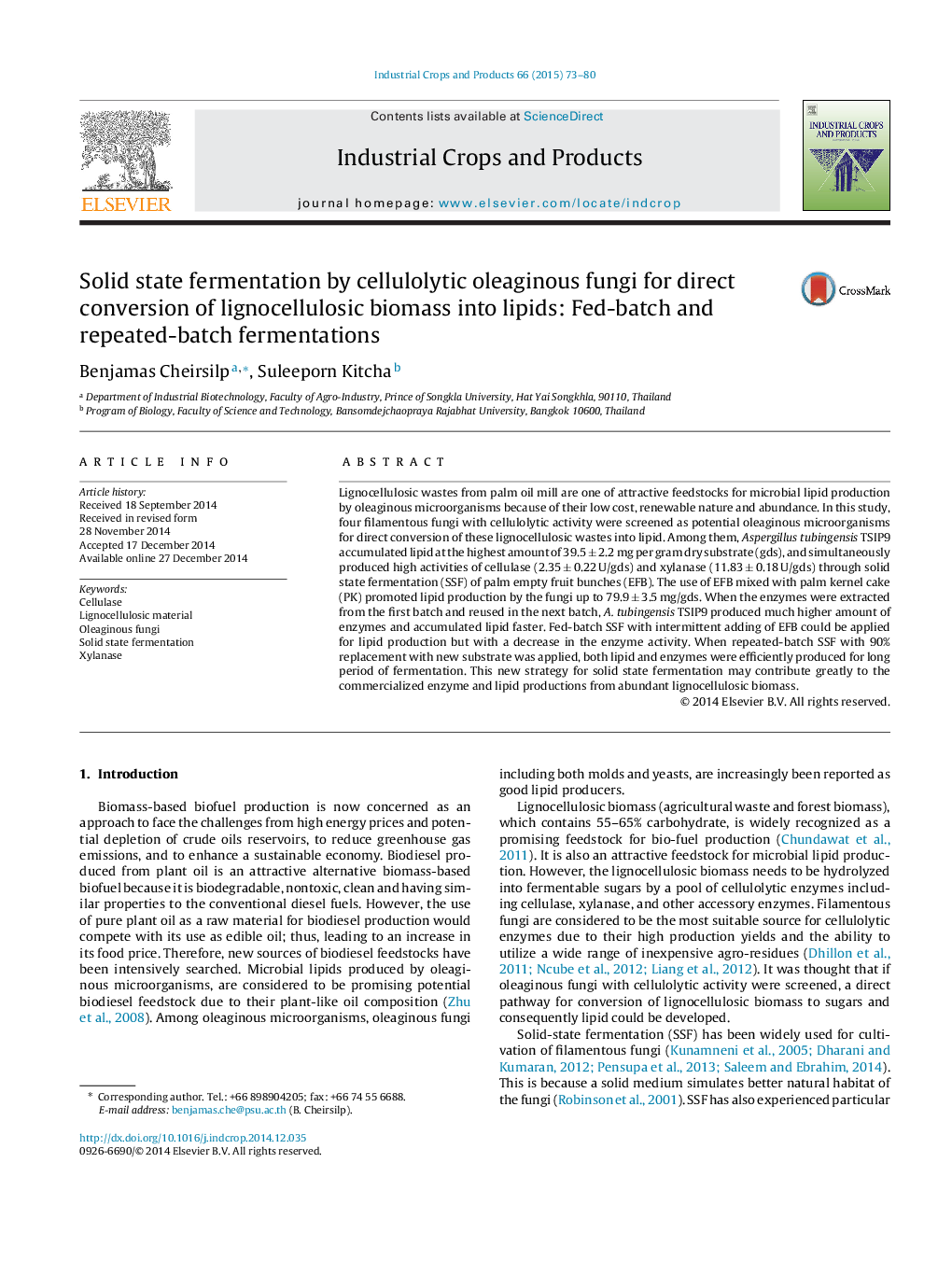| کد مقاله | کد نشریه | سال انتشار | مقاله انگلیسی | نسخه تمام متن |
|---|---|---|---|---|
| 4513214 | 1624843 | 2015 | 8 صفحه PDF | دانلود رایگان |
• Oleaginous fungi could directly convert lignocellulosic biomass into lipid.
• Palm empty fruit bunches and kernel cake could be used for lipid production.
• Fed-batch fermentation enhanced lipid production but produced low enzyme activity.
• Repeated-batch fermentation gave efficient both lipid and enzyme production.
Lignocellulosic wastes from palm oil mill are one of attractive feedstocks for microbial lipid production by oleaginous microorganisms because of their low cost, renewable nature and abundance. In this study, four filamentous fungi with cellulolytic activity were screened as potential oleaginous microorganisms for direct conversion of these lignocellulosic wastes into lipid. Among them, Aspergillus tubingensis TSIP9 accumulated lipid at the highest amount of 39.5 ± 2.2 mg per gram dry substrate (gds), and simultaneously produced high activities of cellulase (2.35 ± 0.22 U/gds) and xylanase (11.83 ± 0.18 U/gds) through solid state fermentation (SSF) of palm empty fruit bunches (EFB). The use of EFB mixed with palm kernel cake (PK) promoted lipid production by the fungi up to 79.9 ± 3.5 mg/gds. When the enzymes were extracted from the first batch and reused in the next batch, A. tubingensis TSIP9 produced much higher amount of enzymes and accumulated lipid faster. Fed-batch SSF with intermittent adding of EFB could be applied for lipid production but with a decrease in the enzyme activity. When repeated-batch SSF with 90% replacement with new substrate was applied, both lipid and enzymes were efficiently produced for long period of fermentation. This new strategy for solid state fermentation may contribute greatly to the commercialized enzyme and lipid productions from abundant lignocellulosic biomass.
Journal: Industrial Crops and Products - Volume 66, April 2015, Pages 73–80
